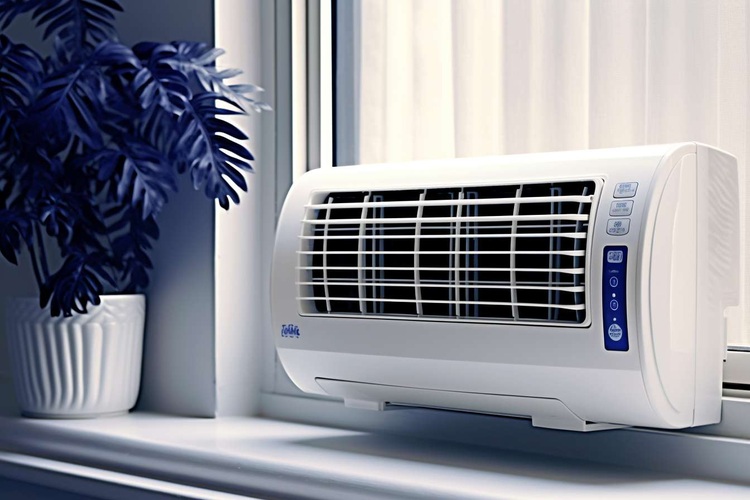What to Know Before Choosing an Air Conditioner for Your Living Space
Choosing the right air conditioner today means more than just cooling — it’s about finding a unit that fits your space, your budget, and your lifestyle. From energy-saving modes to smart remote controls, this article explains what features to look for and how to make an informed decision. Whether you're upgrading an old unit or buying new, we break down what matters most.

What size air conditioner do I need for my room?
Determining the correct size of your air conditioner is paramount for optimal performance and energy efficiency. An undersized unit will struggle to cool your space, while an oversized one may lead to excessive energy consumption and humidity issues. To calculate the appropriate size:
-
Measure your room’s square footage
-
Consider factors like ceiling height, insulation, and sun exposure
-
Use the general rule of 20 BTU per square foot of living space
For example, a 300 square foot room typically requires a 6,000 BTU air conditioner. However, adjustments may be necessary based on specific room characteristics and local climate conditions.
How do energy efficiency ratings impact my air conditioner choice?
Energy efficiency is a crucial factor in choosing an air conditioner, as it affects both your electricity bills and environmental impact. Look for these key ratings:
-
Energy Efficiency Ratio (EER): Measures cooling output divided by power input
-
Seasonal Energy Efficiency Ratio (SEER): Calculates efficiency over an entire cooling season
-
Energy Star certification: Indicates units that meet strict efficiency guidelines
Higher EER and SEER ratings indicate more efficient units. While these models may have a higher upfront cost, they can lead to significant savings on energy bills over time. In the Philippines, where air conditioning can account for a large portion of household energy consumption, choosing an energy-efficient AC is particularly important.
What smart cooling features should I look for in modern air conditioners?
Modern air conditioners come equipped with a range of smart features that enhance comfort, convenience, and energy savings:
-
Wi-Fi connectivity: Control your AC remotely via smartphone apps
-
Programmable timers: Set cooling schedules to match your routine
-
Sleep modes: Gradually adjust temperature for comfortable sleeping conditions
-
Motion sensors: Detect occupancy and adjust cooling accordingly
-
Voice control: Integration with smart home assistants like Alexa or Google Home
These features not only improve user experience but can also contribute to energy savings by optimizing cooling based on your habits and preferences.
How do different types of air conditioners compare?
When choosing an air conditioner, it’s essential to understand the various types available and their suitability for different living spaces:
-
Window units: Ideal for single rooms, easy to install, and generally affordable
-
Split systems: Quieter operation, more efficient, and suitable for cooling multiple rooms
-
Portable units: Flexible solution for renters or those needing mobility
-
Central air systems: Best for whole-home cooling in larger residences
Consider factors like installation requirements, energy efficiency, and the specific needs of your living space when comparing these options.
What maintenance considerations should influence my air conditioner choice?
Proper maintenance is crucial for the longevity and efficiency of your air conditioner. When selecting a unit, consider:
-
Filter accessibility: Easy-to-replace filters encourage regular maintenance
-
Self-cleaning functions: Some models offer features that help prevent mold and bacteria growth
-
Warranty coverage: Look for comprehensive warranties that protect your investment
-
Availability of local service providers: Ensure that qualified technicians are available in your area
In the Philippines, where high humidity can impact air conditioner performance, choosing a unit with robust anti-corrosion features and good moisture management capabilities is particularly important.
How do air conditioner prices compare across different models and features?
When it comes to air conditioner pricing, there’s a wide range depending on the type, capacity, and features of the unit. Here’s a comparison of some popular air conditioner options available in the Philippines:
| Product | Type | Capacity (BTU) | Key Features | Cost Estimation (PHP) |
|---|---|---|---|---|
| Carrier Optima 53QHC012 | Window Type | 12,000 | Energy-efficient, sleep mode | 25,000 - 30,000 |
| Panasonic CS/CU-XU10VKQ | Split Type | 9,400 | nanoe™X technology, Wi-Fi control | 35,000 - 40,000 |
| Koppel KWR-09M5A | Window Type | 9,000 | Energy-saving mode, auto-restart | 15,000 - 20,000 |
| Daikin FTXV50UVMA | Split Type | 18,100 | Inverter technology, Coanda airflow | 60,000 - 65,000 |
| Condura WCONH010EC | Window Type | 10,000 | Eco mode, anti-bacterial filter | 20,000 - 25,000 |
Prices, rates, or cost estimates mentioned in this article are based on the latest available information but may change over time. Independent research is advised before making financial decisions.
Choosing the right air conditioner involves balancing initial costs with long-term energy savings and comfort benefits. While higher-end models with advanced features come at a premium, they often offer better energy efficiency and smart capabilities that can lead to savings over time. Consider your budget, room size, and specific needs when making your decision.
In conclusion, selecting the ideal air conditioner for your living space requires careful consideration of size, energy efficiency, smart features, type, maintenance needs, and budget. By taking the time to evaluate these factors, you can ensure a comfortable and cost-effective cooling solution for your home in the Philippines’ tropical climate.




